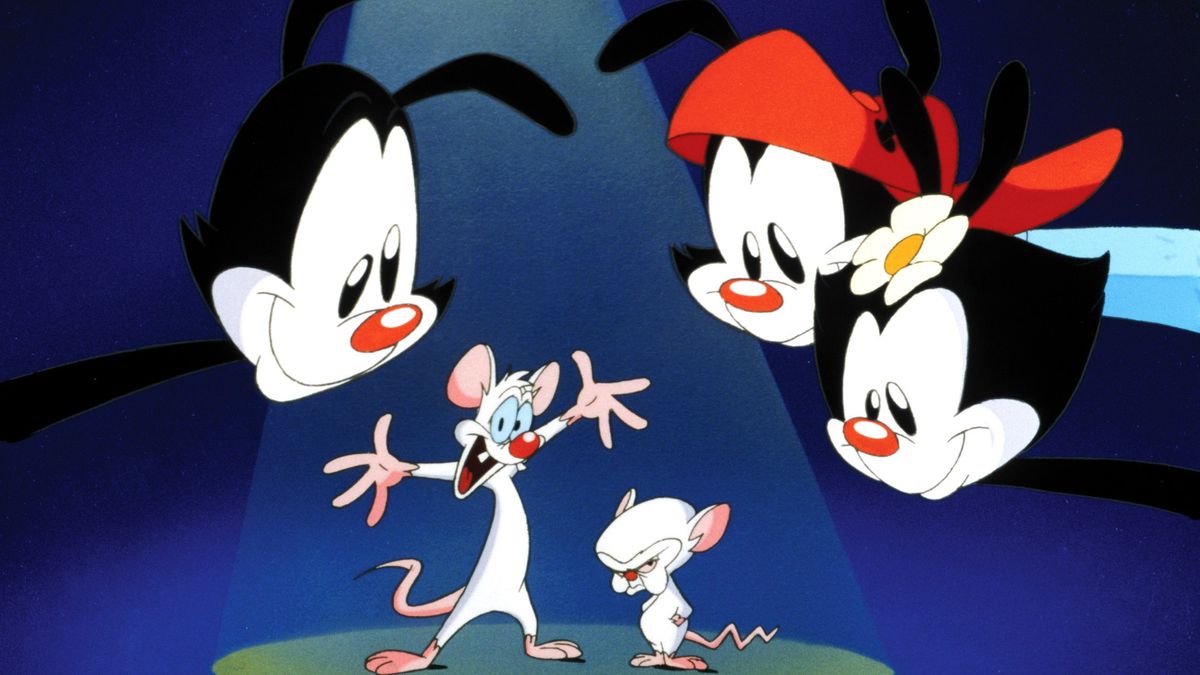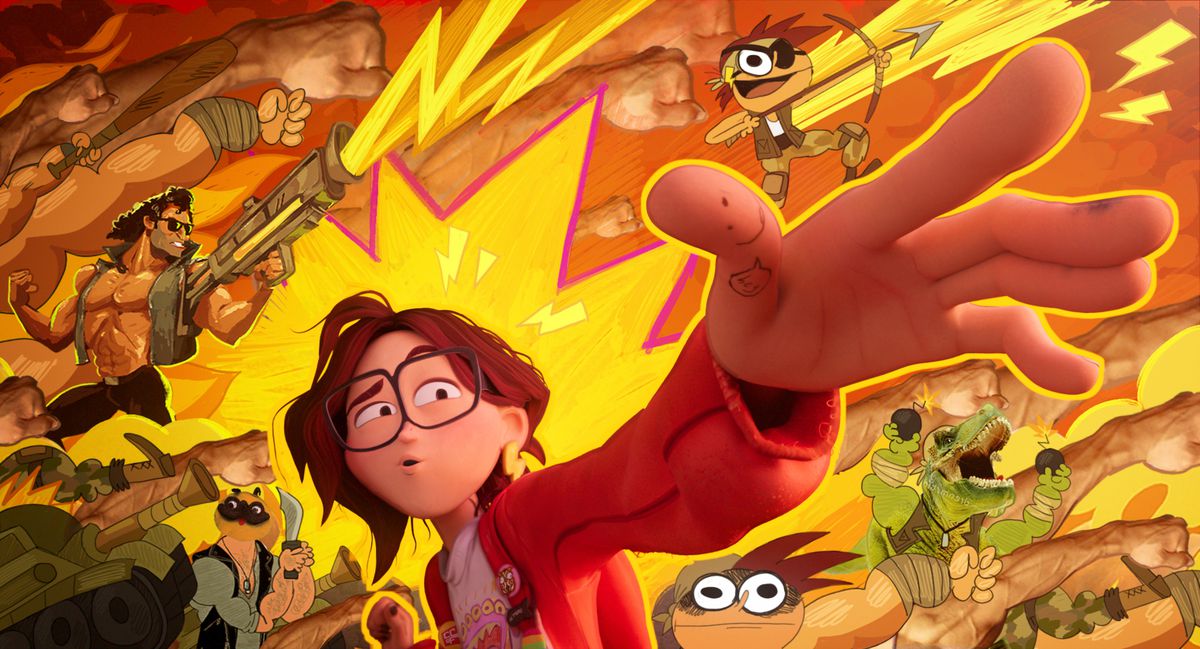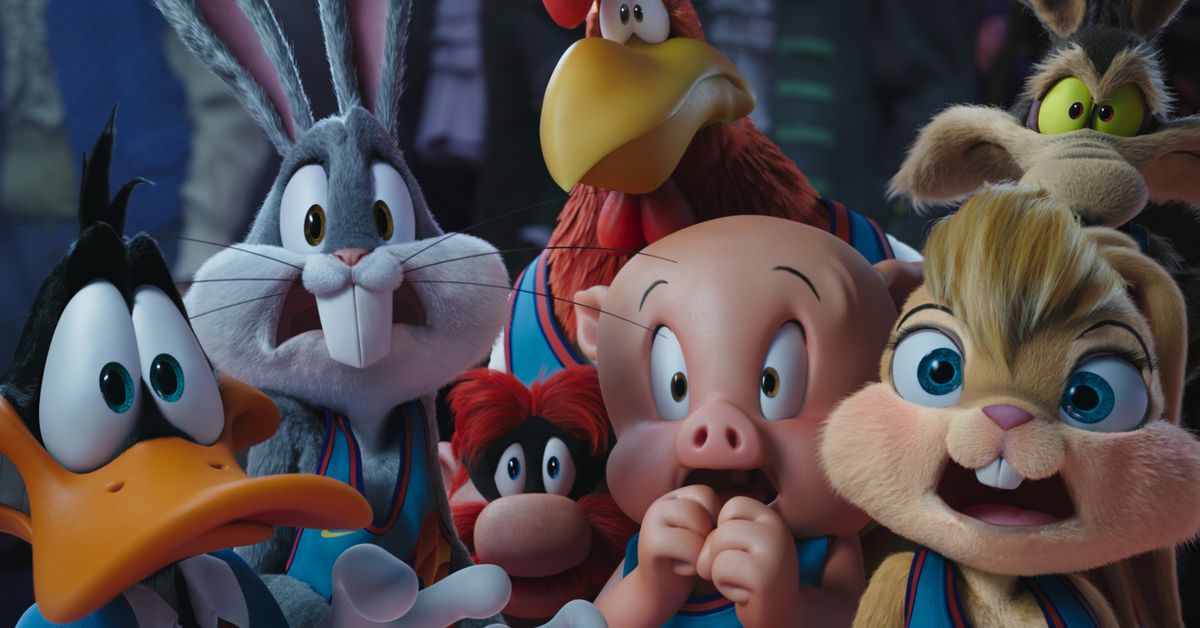Space Jam: A New Legacy, a 25-years-later sequel to the 1996 commercial-slash-movie Space Jam, is also the first theatrical feature to star the world-famous Looney Tunes characters in 18 years. (Looney Tunes: Back in Action, a sort of unofficial Space Jam follow-up, flopped back in 2003.) Their extended absence from cinema is a cruel irony, because the DNA of the original Warner Bros. cartoon shorts has become embedded in the history of animated American movies, even as the characters have struggled to move beyond a filmography mixing low-rent compilation movies and basketball-star hagiography. The Looney Tunes sensibility — slapstick, unhinged characters, and fourth-wall-breaking irreverence — has informed many big-screen cartoons over the last 50 years, even though Bugs and company haven’t been consistent marquee movie stars during that time. And now that they’re back, they’ve been reshaped by the movies they helped inspire.
The old Looney Tunes and Merrie Melodies shorts were produced contemporaneously and competitively with much of Disney’s early output (hence the names, a play on Disney’s “Silly Symphonies”), so the Warner style didn’t much influence Disney’s forays into feature animation. For decades, explosive Looney Tunes slapstick was something Disney fell into rarely and in limited circumstances, as when 2000’s The Emperor’s New Groove abruptly pivoted from post-Lion King epic to punch-drunk, self-referential comedy. Or it became second-degree homage, as when Pixar’s 2001 movie Monsters, Inc. paid tribute to the Chuck Jones cartoon “Feed the Kitty.” (Part of what made these turns particularly refreshing was how rare they were.)
Throughout the ’90s, a number of studios tried and mostly failed to provide Disney alternatives — including Warner, whose pickup toon Cats Don’t Dance had a bit of Hollywood-aware Merrie Melodies zing. (Like so many Warner feature cartoons of that era, it flopped unceremoniously.) Instead, the trademark Warner Bros. mix of playful verbal humor and consequence-free abrupt violence continued to find an outlet in short-form animation, specifically the Looney Tunes-adjacent series Tiny Toon Adventures and Animaniacs.

Image: Warner Bros. Animation
Eventually, Disney competitors found big-screen footing, starting with DreamWorks Animation, whose early pictures like Antz and Shrek could lay claim to a vaguely adult-minded, reference-laden lineage that reached back to the Looney Tunes (as well as Rocky & Bullwinkle and The Simpsons — or at least, the multitude of post-Simpsons animated knockoffs). Over the past 20 years, some of the better DreamWorks cartoons have followed that muse into Warner-worthy territory, though not always for the full length of a feature. The creature-heavy chase sequences that open both Croods movies, for example, feel a bit like Roadrunner/Coyote bits without any of the sketch-like blackouts, just heedless forward motion. Bee Movie was memed into an ironic curiosity, but the movie’s actual sensibility — that it seemed guided by the whims of adults, rather than angling for the adoration of children — has some of the chatty, dialogue-heavy absurdities of later-period Daffy Duck.
Bee Movie wasn’t a smash, but DreamWorks has been so successful overall that it has re-coded a bunch of Looney Tunes moves into go-to hackery. Old Warner cartoons are often chockablock with then-contemporary references that read to later generations as charming or inexplicable eccentricities; how many dedicated viewers of The Bugs Bunny and Tweety Show on Saturday mornings or Looney Tunes on Nickelodeon knew Peter Lorre as a real-life character actor, rather than a generic mad-scientist weirdo from cartoons? DreamWorks productions like Shark Tale or Trolls take this process a step further. Rather than merely rendering fish characters to resemble celebrities like Martin Scorsese or Angelina Jolie, they use the genuine articles as voices, and hire the real Justin Timberlake to sing caffeinated mash-ups of popular songs rather than parodies. What is the notorious DreamWorks Poster Face if not a bastardization of Bugs Bunny’s perpetually arched eyebrow?
Though some of the DreamWorks designs have appealing cartooniness, especially when they aren’t mugging for their poster images, another animation studio’s style owes an even greater debt to Looney Tunes — with less of a propensity for blowing everything out into action-movie bombast. (There’s a little of this in almost every big-studio animation house, but DreamWorks is especially guilty of it). Certain productions from Sony Pictures Animation, like the Cloudy with a Chance of Meatballs and Hotel Transylvania series, have rounded, often googly-eyed characters that squash and stretch like denizens of ’30s and ’40s shorts, with a madcap energy and exaggerated poses that sometimes recall venerated animation director Bob Clampett. The Hotel Transylvania movies are often tied up with Adam Sandler’s suburban crankiness, but in their flights of pure cartoon fancy, director Genndy Tartakovsky can make them feel as if a lunatic gag might erupt at any given moment.
Sony Animation doesn’t guarantee looniness. The label encompasses talking-animal pictures that mix live-action and CG from special-effects companies, like Peter Rabbit; more ambitious style experiments like Spider-Man: Into the Spider-Verse and The Mitchells vs. the Machines; and outright garbage like The Emoji Movie. For that matter, even the Hotel Transylvania movies can feel more frenetic than funny, more jabbery than witty. That’s where DreamWorks cartoons often resemble, then depart from, the Looney Tunes aesthetic as well. While many of them proceeded without dialogue, certain characters and series — Foghorn Leghorn, Yosemite Sam, anything pitting Bugs against Daffy — revel in torrents of verbal eccentricities. A lot of contemporary American animation doesn’t trust its imagery to convey its stories and ideas, but those films especially don’t trust dialogue to do anything but accentuate and punctuate the action with verbal filler. The result is a barrage of empty phrases with the cadence of jokes: “That was awkward.” “I’m OK!” “The who in the what now?” “I got it, I got it… I don’t got it.”

Photo: Netflix
Both forms of distrust are all over Space Jam: A New Legacy, which arrived in a very different animation landscape than its 1996 predecessor. The first film, mixing traditional 2-D animation with Michael Jordan and other assorted celebrities, was essentially a less-inspired extension of 1988’s Who Framed Roger Rabbit. A New Legacy also apes the vast multi-character IP bonanza of that Robert Zemeckis classic, plus newer variations like Ralph Breaks the Internet and Ready Player One. But far from Roger Rabbit’s engaging Bugs Bunny/Mickey Mouse double act or Daffy/Donald face-offs, the Looney Tunes in Space Jam 2 feel more lost and watered-down than ever. Their new movie feeds their hallmarks through a contemporary content machine, and they emerge looking like the worst DreamWorks tendencies they helped inspire. The Looney Tunes influence has been so heavily distorted that it’s somehow able to influence new Looney Tunes — and make them worse.
Even when New Legacy does indulge in cartoon mayhem, it isn’t really “shot” like classic Looney Tunes shorts, with their clear planes of action, often in front of a fixed background. Instead, the virtual camera rollicks and wobbles around like one of the expensive-looking sequences from The Boss Baby: Family Business. Some of this is just changing styles and more sophisticated technology, of course, but it’s worth noting that these sequences aren’t especially funny, even on their chosen level of chaos. It’s mayhem for its own sake, and the dialogue has been sapped of any playful wordiness. Daffy Duck says “You’re despicable” because it’s what he said in the classic cartoons, but the rest of the time, he recites meaningless fake jokes like “So that happened.” Bugs Bunny barely has any time for pithy remarks or mischievous takes to the camera; he’s too busy trying to integrate the designation “Looney” into a catchphrase. (As in, “If we’re going out, we’re going out Looney!”)
A New Legacy is a strange, sometimes bittersweet reminder that Looney Tunes style, whether pure or diluted, hasn’t really belonged to the Looney Tunes in a long time, at least not on the big screen where it began. It still flourishes on TV, where a series of new Looney Tunes shorts, many quite good, have been stockpiled and are available on HBO Max. It occasionally escapes back to the big screen, sometimes even through Warner. Joe Dante, whose Looney Tunes: Back in Action is much closer to the spirit of the original cartoons than either Space Jam movie, has made a whole career of that influence, translating it to live-action with the likes of Warner’s Gremlins 2: The New Batch. (Like so many WB characters, the Gremlins are reduced to a meaningless cameo in Space Jam 2.)
And few American animated movies have been as simultaneously anarchic and character-based as Teen Titans GO! To the Movies, a feature version of the long-running Cartoon Network superhero comedy, which typically airs in shorts-style 12-minute bursts. As a half-promotion, half-spoof, the show recently released a feature-length episode where the rowdy heroes watch, admire, and heckle the original Space Jam. It’s a cross-promotional opportunity, to be sure, but it’s one that finds the Titans where Looney Tunes used to hang out: commenting on pop culture and following their oddball personalities. Their new movie makes clear that Warner’s idea of a “new legacy” involves them jostling for attention amid the minions, Boss Babies, and Shreks they helped spawn.
Polygon – All
Source link
Related Post:
- LeBron James and the Tune Squad bounce their way into Looney Tunes: World of Mayhem | Articles
- The Chair: Netflix’s comedy finds the bitter humor in woke college politics
- Ping system confirmed for Halo Infinite along with weapon spawn details
- King Spawn’s epic aim explained by Todd McFarlane at Comic-Con 2024
- Steam Next Fests have helped games with wishlisting and sales
- People Have Been Receiving Weird Fortnite Postcards In The Mail, And They’re Not Sure Why
- This Biomutant mod tunes its graphics for maximum beep-boop
- CS:GO gets new music kits, with polka-metal and Star Wars game composer’s tunes
- Our worst movie theater experiences, and the movies they ruined
- Universal movies to stream on Peacock after they open in theaters
